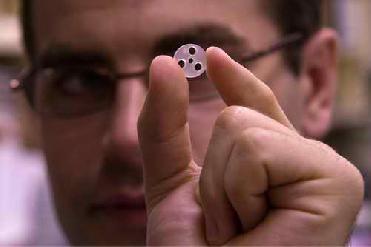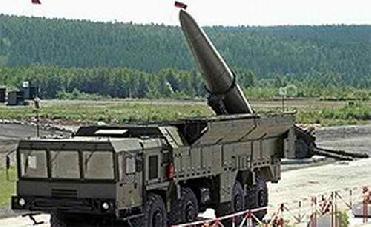
In this photo released by the University of Florida's Institute of Food and Agricultural Sciences, embryology researcher Justin Matthew examines a portion of a device which carries samples of just-fertilized bovine embryos into space
NEW YORK (BNS): An interesting research aboard the ongoing Endeavour shuttle mission would help in addressing this issue, which is bound to come up sooner or later in man�s foray further into the outer space: That of extraterrestrial motherhood.
The experiment aboard the space shuttle that reached the International Space Station Sunday would be the first to examine how early-stage mammalian life develops under these conditions.
�The experiment will observe the progress of just-fertilized cow embryos as they divide and develop in the micro-gravity environment of the space shuttle,� said a University of Florida press release.
�There�s a lot of uncertainty about how embryos at this stage do what they do -- it�s true in cows, and ob-gyns will tell you the same thing about human embryos,� the release quoted Peter Hansen, an animal sciences professor at the University of Florida�s Institute of Food and Agricultural Sciences. �It�s anyone�s guess what they�ll do in space.�
Hansen�s team is working with NASA, the US Department of Agriculture�s Agricultural Research Service and Zero Gravity Inc, a Maryland-based company. Hansen provided the embryos and will help analyze them upon their return to Earth 15 days later.
According to the release, several hundred cow eggs will be fertilized in test tubes just a day or two before the shuttle launch. During the flight, they should grow into tiny embryos composed of about 100 cells that are organized into only three types of primitive tissue. These embryos will be fixed with a preservative on the eighth and on the final day of the shuttle flight for analysis back on Earth.
Along with giving the researchers a first glimpse of how mammalian embryos tough out space travel, the work may also offer some clues about how a perfectly spherical ball of cells begins to grow into a body�s irregular shape.
A variety of biological mechanisms may play a part in directing embryo growth. For example, chemicals that spur the growth of specific types of cells disperse at different parts of the early embryo.
�However, a lack of gravity may interfere with this dispersion. Alternatively, the cells, unencumbered by the stressing forces of gravity, may actually grow at faster rates,� the Florida University release noted.
The researchers will also observe how pig liver stem cells grow, function and self-organize in micro gravity -- a portion of the experiment that the researchers affectionately refer to as �pigs in space.�
�There are a lot of changes in human and animal physiology that we know occur during space travel,� said Neil Talbot, a USDA-ARS agricultural researcher and principal investigator on the work. �Fluids are redistributed, bone density changes and so on. But how a lack of gravity affects cell growth and normal cell-to-cell self-organization is another question. You might expect some unique phenomenon at the cellular level, and this will be the focus of the experiment.�
Of course, not all of the cells will survive the trip, but even those are of benefit to science. Hansen�s group is eager to examine the embryos to learn more about how the stress of space flight might affect the natural process of cell death.
�Even healthy embryos terminate some of their cells as they grow,� Hansen said. �This is just another chance to examine how that process works under a very unusual set of circumstances.�
 Next Article
Next Article













The Indian Air Force, in its flight trials evaluation report submitted before the Defence Ministry l..
view articleAn insight into the Medium Multi-Role Combat Aircraft competition...
view articleSky enthusiasts can now spot the International Space Station (ISS) commanded by Indian-American astr..
view article